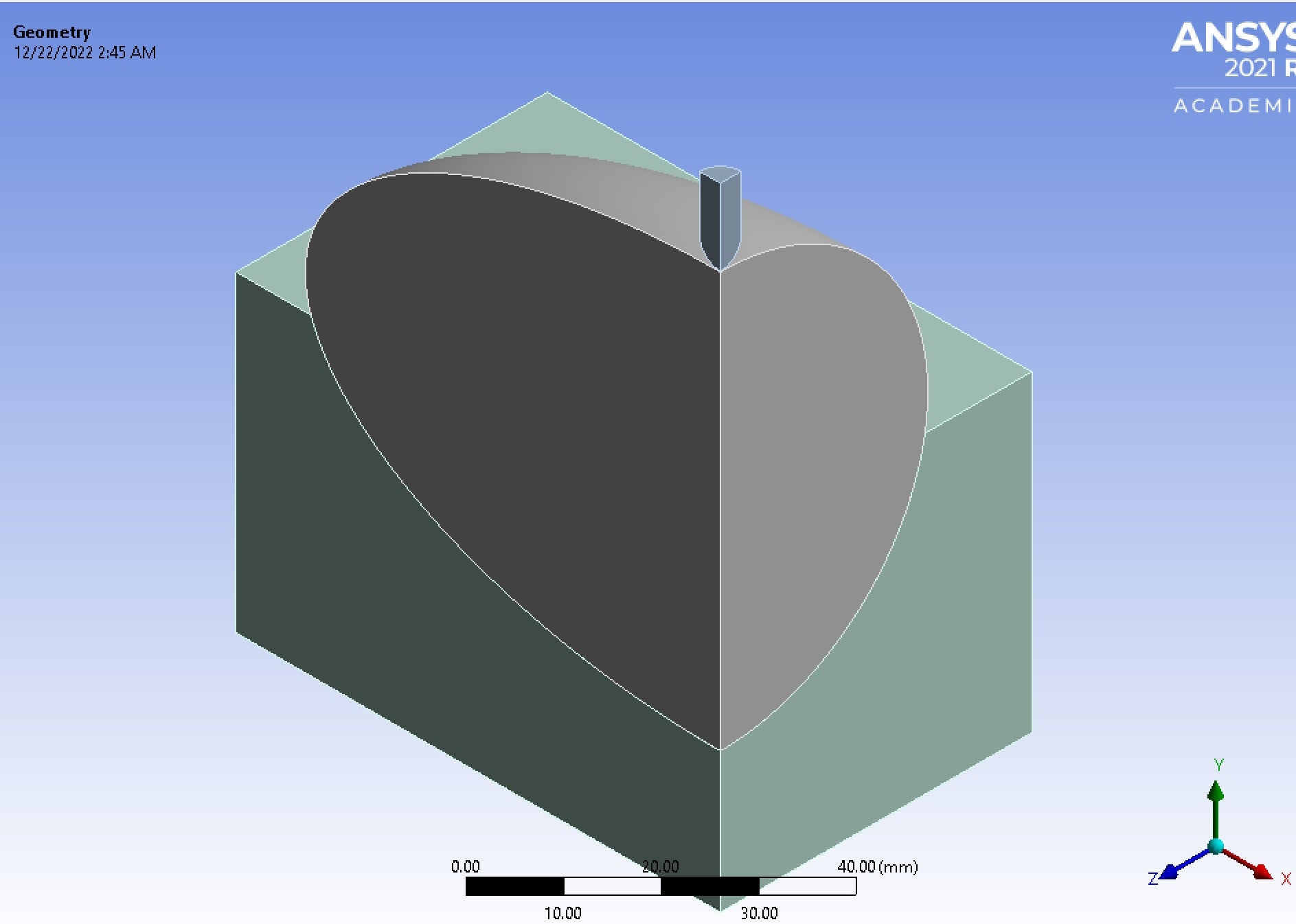-
-
December 21, 2022 at 5:52 pm
drevsh
SubscriberHi,
I have a model with an indenter (Steel) and a round body (hyperelastic material) and with an indentation dept of 4 mm I get very distorted elements. How is it possible to do a convergence study for these cases? I have tried the mesh convergence tool, but the rounded body does not change (only the indenter). Additionally, using a finer mesh tend to a converge results, but some element sizes are not solvable.
Some Hertz solution models use a very fine mesh, but the indentation depth is usually a micro indentation and does not possess a high element distortion.
As for the boundary conditions, firstly, I have a symmetric boundary condition. I have used a displacement on the surfaces of the indenter, and a fixed support on the low part of the platform. There is a frictionless contact between the indenter and the soft body, and a bonded contact between the platform and soft body.
I appreciate any comments, best regards

-
December 22, 2022 at 11:19 am
bhagwantP
Ansys EmployeeHello drevsh,
will you please check use of nonlinear adaptive mesh (NLAD) for hyperelastic material and see if it's overcoming convergence trouble.
Reference material:
Optimal use of Nonlinear Adaptive Region (ansys.com)
Ansys Non-Linear Adaptive Meshing (NLAD) | Ansys Mechanical (simutechgroup.com)
Thanks
-
- The topic ‘Mesh convergence in indentation model’ is closed to new replies.



-
4007
-
1461
-
1287
-
1124
-
1021

© 2025 Copyright ANSYS, Inc. All rights reserved.







